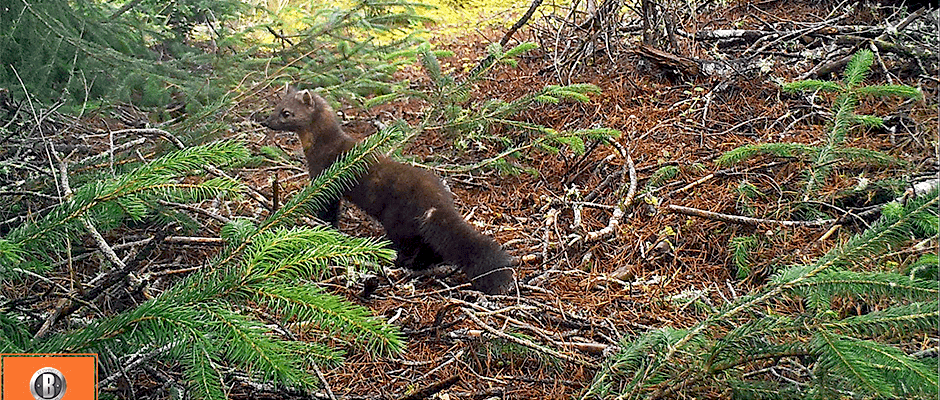Share this article
Pacific marten populations face extinction
The Pacific marten (Martes caurina) is a mysterious little predator that lurks in remote slivers of dense forests in coastal Oregon and northern California. But researchers warn populations may vanish in the next couple decades without conservation measures.
“This study is reporting a small population size vulnerable to extirpation,” said Katie Moriarty, co-lead author on the paper published in PeerJ. “As a society, we can make decisions about how to respond.”
A research wildlife biologist at the U.S. Forest Service’s Pacific Northwest Research Station, Moriarty and her partners began evaluating the population size, density and home ranges of martens in the Oregon Dunes National Recreation Area on the state’s central coast in 2014. They fixed radio collars on 10 adults, deployed 31 camera traps capable of distinguishing among unique collar patterns and determined how many martens inhabited the landscape by analyzing how often the cameras captured the marked martens. Then they assessed the population’s viability in the context of vehicle-induced mortality, trapping and other human threats.
The results revealed that 71 adult martens occupied small home ranges in two subpopulations divided by the Umpqua River. They also showed that the subpopulation south of the river, which consists of 30 individuals, faces up to 99 percent risk of extinction in the coming 30 years with just two or three human-driven deaths every year.
“The martens were restricted in a very narrow band of vegetation west of Highway 101, limiting their total population size,” Moriarty said.
These findings match those from northern California, she said, which have also indicated modestly-sized marten populations.
Besides reducing their harvest and road mortality, Moriarty said, “the long-term goal would be increasing the vegetation suitable for marten occupancy and reproduction and connectivity between populations. That, given the ownership matrix in coastal Oregon, is not a simple task — lands are a mix of public, private and residential.”
In 2010, she said, the Pacific marten was petitioned for listing under the federal Endangered Species Act, but in 2015, the U.S. Fish and Wildlife Service deemed the listing unwarranted. Last year, the U.S. District Court for the Northern District of California decided the agency should revisit the decision, so it has been gathering more information on marten populations and rewriting a rule to put out by October.
Moriarty’s team is now examining the marten’s reproductive success, prey availability and susceptibility to predation as well as the vegetation found in places the animal utilizes.








